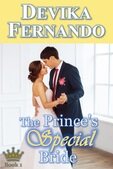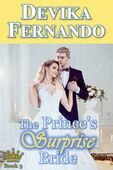Adite Banerjie | Paromita Goswami | Preethi Venugopala | Reet Singh | Ruchi Singh | Saiswaroopa Iyer | Sudesna Ghosh
P for Prologue
Here are three uses of prologues in fiction that create interest:
1) Introduce your villain in the prologue
In genres like suspense and mystery, horror or thriller, a prologue can capture the readers’ attention by offering a first glimpse of the villain. It shouldn’t just be a description; introduce him/her through a crime, through a devious plan or through the eyes of someone else. It’s even possible to write from the villain’s point of view if that heightens suspense or provides insights. That way, the readers will know that doom is looming, or they might even have a clue that the protagonists of the story lack. Sometimes, the prologue shows the villain or the protagonists in a completely different light than later on in the proper story, and that makes for interesting conflict and keeps the audience wondering.
For example: My co-author Mike Wells and I chose to write a prologue for Book 1 of our ‘Forbidden’ romantic suspense series. It shines a light on Lady Sotheby’s dark past, and those events cast their shadows over the presence, influencing later happenings. If the prologue scares the readers or leaves them hanging, wanting to see who killed whom or what happens next, then it serves its purpose. In a way, such a prologue can even help sales because some people read the free preview of an eBook on Amazon before buying a book.
2) Use the prologue for world building
In genres like fantasy, science-fiction or paranormal romance, the world can differ from what we’re used to. There might be rules or species/creatures the readers are not familiar with. The prologue can give an overview of how things work and who’s who. It could explain, for example, how vampires came to be, who rules a certain country or city, or what happened to create the dystopian future where the action takes place. Keep in mind that you shouldn’t write a whole discourse on your setting or dump information in a dry, non-fiction way. Find a way to incorporate protagonists or an interesting occurrence in order to introduce your world.
3) Step back into the past
Just like the epilogue might allow a glimpse of the future at the end of the book (after the actual story is finished), the prologue is the best place to share something from the past. This makes sense when creatures with long lives or people from influential families are involved. Second chance romance novels might turn back time to the youth of the protagonists, who are grown up or older in the story itself. If historical events, time travel or pivotal memories are important to the story, they can be described in a short, entertaining or intriguing prologue. Stay away from unnecessary backstory or dream sequences, though.














 RSS Feed
RSS Feed